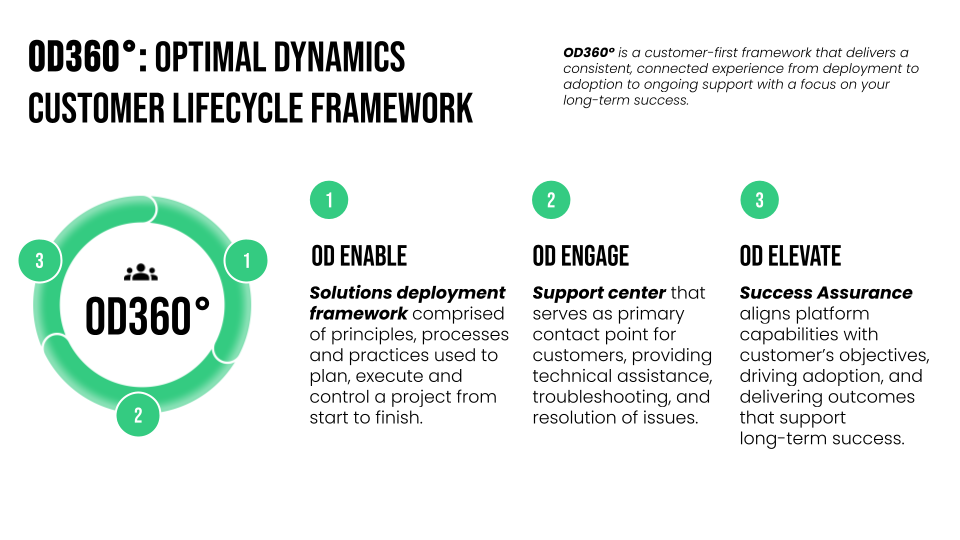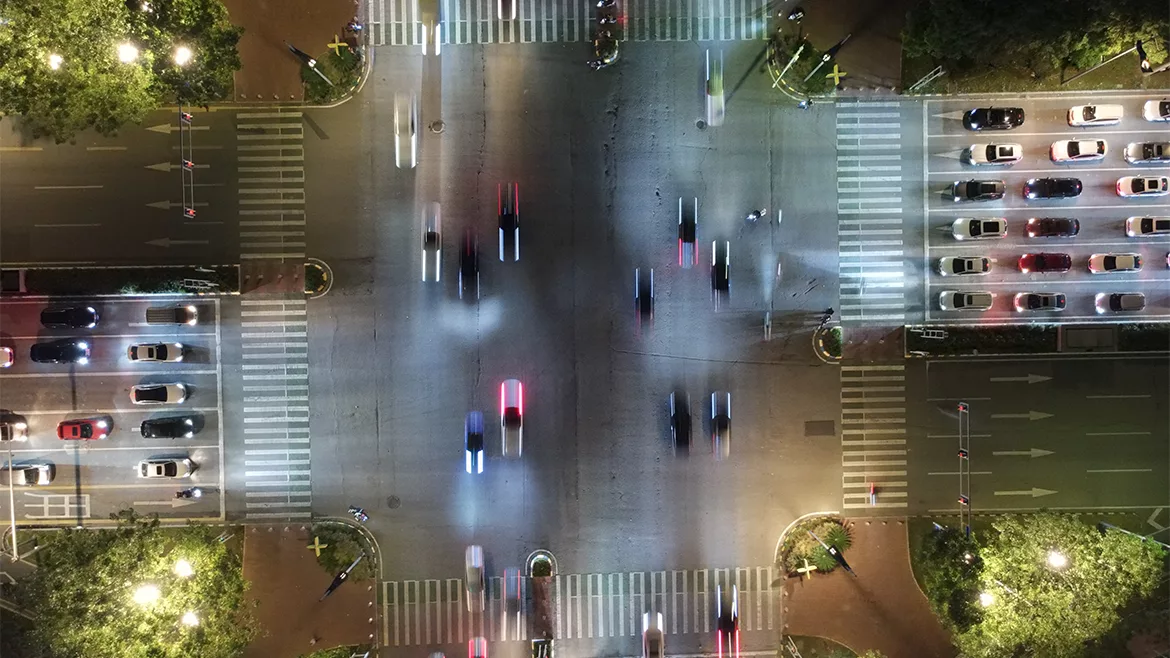Transforming the Trucking Industry: A Conversation with Ron Lazo, Chief Customer Officer
At a time when trucking companies are under relentless pressure to improve margins, retain drivers, and stay ahead of market shifts, decision automation is emerging as a powerful lever for transformation. To learn more about how Optimal Dynamics helps large carriers navigate this complexity, we sat down with Ron Lazo, Chief Customer Officer at Optimal Dynamics.
Ron shares what drew him to the company, how he’s building a foundation for scalable success, and why proactive planning beats reactive firefighting every time.
Ron Lazo Q&A
After decades in transportation technology, what inspired you to join Optimal Dynamics?
The opportunity to take a game-changing technology like Optimal Dynamics to market is rare. I was inspired by how the platform is revolutionizing planning, execution, and network optimization. I was excited because it’s more than just optimizing or automating current processes — it’s about helping carriers rethink how they operate through a smarter decision layer.
When you joined, what vision did you have for Customer Success, and what progress have you made so far?
My mission is to help position us to execute at scale. There are really three components to that: people, process, and technology. And I went to work on all three.
I also recognized that we needed to be grounded in a framework of customer success, something that addresses every stage of the customer lifecycle from initiation and deployment through the transition to support and then ongoing success. We want customers to continue to realize value from our platform. With that in mind, I reviewed everything from top to bottom and developed a framework that we call “OD360.”
What does OD360 look like in action?
There are three parts to OD360. First, there’s OD Enable, which focuses on getting customers up and running with the product and positioning them well in terms of automation and optimization. The second piece is OD Engage, where customers transition to the ongoing care they need. And then we have another team, OD Elevate, that’s focused on helping drive continuous success.

I also had to add people who were familiar with industry-standard frameworks and who had experience in both the transportation space and deploying SaaS. And then, obviously, we also needed the right tooling in place to help us manage our customers.
To that end, we have recently hired Clive Miles, Head of Solutions Delivery, and Davison Schopmeyer, Head of Customer Experience, both experienced leaders in the supply chain industry. We also have an extremely strong team of leaders who bring together expertise in analytics and network optimization with decades of experience in transportation and logistics.
What have you learned about your customers’ needs and expectations? Anything that surprised you?
The thing we learned is we’re not just a software vendor. We quickly become a partner, and our solutions get embedded into their daily operations. When we talk about this foundational transformation, it’s more than just standing up software and technically enabling a solution. It’s about how we influence their decisions, their workflows, their roles and responsibilities, and how they get organized. This is a different way to think, operate, make decisions.
The thing that surprised me the most was that it’s more than just accepting the system. It’s also accepting changes in how they operate and how they prepare their people for that. Our team is part of that journey with them.
The freight market has been tough. How does Optimal Dynamics create value in both good and challenging times?
Generally, when you’re coming out of a freight recession, you see a faster uptick in terms of supply versus demand. This downturn has lasted long enough that rates are still a challenge, volume is still a challenge, and carriers are looking for any and every way possible to drive revenue and demand into their networks.
And I think what’s valuable about our platform is that we’re valuable in the good times, we’re valuable in the tough times. So we can help them maintain margin, preserve margins, run their network as efficiently as possible in the lean times, and then optimize those opportunities when freight demand is heavy. So we help them with both.
You mentioned change management. How do you make it more than just a checkbox?
Change management is an integral part of our OD360 framework — it begins Day 1 when we engage with a customer. Sometimes, our customers aren’t prepared for that; they don’t understand it. That’s why we work shoulder to shoulder throughout the project deployment to ensure they understand all the components of change and what they need to plan for.
We have a toolkit, a set of artifacts that we provide them. Whether it’s in the weekly status meetings, executive syncs, or leadership syncs, we stay highly focused on achieving their objectives. We’re always executing against our best practices and the change management activities the customer needs to focus on throughout.
What does decision automation look like in action for a carrier?
If you look into the day in the life of a carrier, they have to decide what loads to accept. How do those loads get assigned? How do those loads get executed within dispatch? And then how do I deal with exceptions that happen afterward once the load is executed?
There are a significant amount of manual processes that go through that day, the lifecycle. And we interrogate each of those processes in our design process to say within the Optimal Dynamics platform, what can we automate in terms of decision-making? And then what can we optimize to make the network more efficient?
We engage in in-depth workflow discussions with the carrier to understand their daily operations. We ask: How do you see the world with Optimal Dynamics enabled? What decisions are being made? What can the system handle? Where don’t we need a human in the loop?
Can you share a success story that illustrates this impact?
We had a midsize specialty carrier. They had 15 decentralized planning regions, so everyone was effectively — all 15 regions were operating effectively as their own company inside a company. And there was a lot of inefficiency driven by the way they were organized and the decisions that were being made.
So we went in and through enablement of our platform helped them centralize into five or six planning regions. It helped them think more around network visibility capability. Drivers were crossing in the night across regions, and they were incurring more deadhead.
By centralizing the planning, we were able to help expose data that they weren’t otherwise privy to because they were very focused on their regions. So, essentially, we were able to automate decisions, delivering significant efficiency gains. We were getting better load coverage, better service for their customers because we saw all the drivers and loads that were available.
And the other thing is, we were able to materially satisfy driver needs as well because they were getting assigned efficiently to loads that would either help drive mileage, drive pay, or get them home when they needed to.
As you look ahead, what’s the next chapter for you and Optimal Dynamics?
We’re acquiring customers at a rapid pace, which is why we need a strong customer success foundation. We need to be able to execute with confidence, and we need to have the right talent. Those two pillars are key to accelerating deployment timelines and realizing value faster.
See What’s Possible with Optimal Dynamics
Optimal Dynamics is redefining how the trucking industry operates. From automating dispatch decisions to unlocking network-wide optimization, our platform empowers carriers to break down silos, boost utilization, and drive profitability — no matter what the market brings.
Ready to experience working with the Optimal Dynamics team and platform? Explore how decision automation can transform your business from planning to execution. Schedule a demo to learn more.







